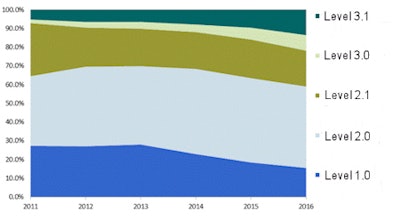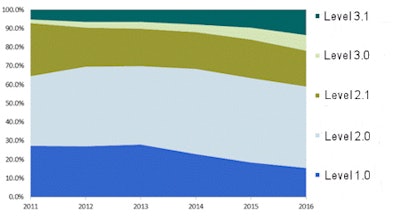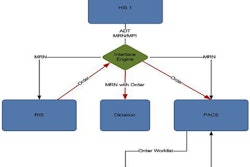
While only 5.4% of the 1.4 billion new radiology studies captured by PACS worldwide were stored by vendor-neutral archives (VNAs) in 2011, VNAs are projected to store 31% of new studies worldwide by 2016, according to a new report from market research firm InMedica.
In its report, InMedica defines a VNA as a medical image archiving platform that provides an open, standards-based architecture for database management, long-term storage, disaster recovery, and secure lifecycle management of data from multiple imaging and nonimaging applications and modalities. It should support DICOM and non-DICOM data irrespective of data source or storage medium, making it both application-neutral and vendor-neutral, InMedica said.
Healthcare providers are increasingly implementing VNAs to consolidate storage, thereby reducing PACS data migration costs and enabling better data mining and data sharing across departments, InMedica said.
The firm noted that hospitals have many different reasons for implementing a VNA, which is reflected in several types of VNA architecture:
- Level 1 -- Single-department DICOM VNA: To minimize storage costs and reduce PACS switching costs in one radiology department
- Level 2 -- Multidepartment DICOM VNA: To share images across departments in a single site
- Level 2.1 -- Multisite DICOM VNA: To share images across multiple locations in a community or hospital group
- Level 3.0 -- Multidepartment XDS-based VNA: To integrate image and nonimage clinical data across departments using cross-document sharing (XDS) or similar protocols as part of a cross-enterprise strategy
- Level 3.1 -- Multisite XDS-based VNA: To use such protocols across multiple locations
 |
| Worldwide VNA study volumes by type of VNA architecture: 2011 to 2016. Image courtesy of InMedica. |
More than 65% of VNA studies worldwide in 2011 used level 2.0 or 2.1 architecture, according to InMedica. This shows that current demand is driven by the need to consolidate, centralize, and share data across imaging departments, Theo Ahadome, lead healthcare IT market analyst at InMedica, said in a statement.
Integrating nonimage data to create a full enterprise strategy is increasingly being implemented, InMedica noted. As this occurs and VNA storage volumes increase, the share of storage volumes held by traditional PACS is projected to erode, according to the firm.
Incremental storage capacity is projected to reach 114 PB worldwide in 2016, compared with 140 PB for PACS, the firm said.




















